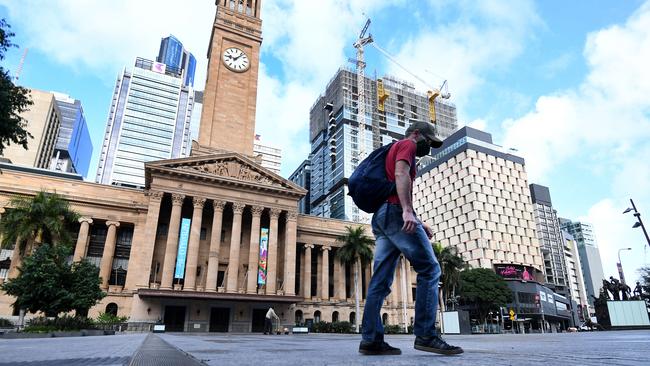Make a plan to stay resilient in Covid-19 lockdown
Scenario planning can ensure businesses are not caught out by unexpected surprises as well as giving banks and staff comfort.

While lockdowns are now something most businesses are familiar with, financial analysts suggest owners should take a moment for scenario planning rather than just “muddling through”.
David King, chief executive of The CFO Centre – a chief financial officer consultancy that fills that role on a part-time or ad hoc basis for small to medium businesses (SME) – said that, with the uncertainty surrounding the Delta variant and government responses to it, scenario planning was a “really useful tool” to devise responses to the possible outcomes over the next few months.
Mr King said that, in the previous round of lockdowns, practically none of its clients used scenario planning until The CFO Centre stepped in.
“Some thought hard work alone would get them out of trouble while others were running around like headless chooks,” Mr King said.
“But by bringing in a CFO, they could take a breath and think about the business from a higher level. That put them back in control, rather than go into crisis management and reactionary mode.”

The first step, Mr King said, was to establish a “business as usual” case for the firm, then map out a stretch case, where circumstances improve faster than expected, and a worse case, where the length of lockdowns worsen. Using those conditions, they then make assumptions about revenue, staffing levels, customer impact and supply chain effects. It didn’t need to be overly complicated, Mr King said. Assumptions and actions could be on one page alongside an Excel-based profit and loss forecast looking three to six months out.
That document will not only help you plan interactions with key stakeholders for the business, such as clients or staff, but will help in conversations with your bank.
“If you need to go to them for help, you are better armed,” Mr King said. “Banks don’t like being surprised if you come to them and say you are out of cash. So a document like this gives them confidence that you are on top of your numbers.”
Mr King said that, during the last lockdown, one of his clients, an office fit-out company, found the plan incredibly useful to ensure the business stayed on track. Each week Mr King discussed progress against the plan with senior management. He said that while most businesses couldn’t afford a full-time CFO, the as-needed CFO Centre model helped bring accountability.

“As CFOs our role is to keep everybody honest, especially the business owner,” he said. “People have so much going on so having someone to remind them not to chase that shiny thing down the rabbit hole can be critically important.”
The CFO Centre represents SME clients across Australia and globally, mostly servicing companies with $2m-$50m turnover. All the CFOs on the books have a background in the commercial world and “have the scars” from dealing with issues ranging from potential insolvency to capital raisings and mergers and acquisitions.
“So many people go into business with a good idea or are highly adept at a skill or a trade,” he said. “Most of the time they don’t have a finance background so they see the firm through the lens of that thing they do really well, like making more of that widget. What they should be doing is working out how the business can work for them, not the other way around.”
That was why forecasting was such an important tool to apply, particularly at the start of the new financial year, Mr King said.
The CFO Centre model is to work with owners to understand what their personal goals are first, and then apply those to the business second.
“Don’t just leap into coming up with some numbers,” Mr King said. “Take time and space outside the business and look at what is important to you. What are your motivations in life and what does the business need to look like to deliver that?”
When it comes to running forecasts, Mr King advised firms to first analyse the previous 12 months, looking out for pain points; what worked, and what opportunities should have been pursued. Don’t just look at last year’s numbers and add a percentage, he warned, as that may just result in 10 per cent more spend across other functions like marketing or sales wages.
Instead, look into what products or services are working and investigate the gross margins they are delivering: it may be those higher sales could come at the expense of profitability.
Using just the profit and loss report for forecasting was also a dangerous trap, Mr King warned. He said any forecast should also be applied to both cashflow and the balance sheet.
“We’ve seen businesses nearly fail because they have grown really well but sucked the cash out of the business. That’s not sustainable, so having three-way forecasts really helps,” he said.
“Too many businesses focus on turnover and what cash is in the bank right now, but that ignores working capital cycles. If you expect to need more inventory, perhaps you can renegotiate terms with suppliers.
“If you take on more customers, what does that mean for your accounts receivables?”


